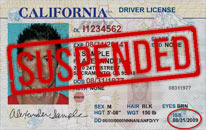
When preparing for a criminal trial, it is essential to know the difference. Direct evidence means that there is evidence that proves a fact. Circumstantial evidence is a fact that can lead to another attribute or context that can be used to draw conclusions.
What Is Evidence?
Evidence is the body of facts that prove or disprove the validity of a proposition. In California, when a jury trial takes place, there are rules about the types of evidence that can be presented. When presented at trial, the evidence must be relevant, reliable, and come from a competent witness.
The evidence presented should not prejudice or confuse the jury. If the evidence misleads, it is not allowed.
What Is Direct Evidence?
Direct evidence means that there is unswervingly truthful evidence that is proof of facts. This type of evidence is concrete proof and helps to build a solid case. Some examples of direct evidence are:
- Eyewitness testimony
- Weapons
- Confessions
Direct evidence is considered solid proof. It is a strong base upon which to build a case.
What Is Circumstantial Evidence?
Circumstantial evidence is factual evidence that is used to prove a point. It is evidence, but it requires one to infer whether it proves or disproves another fact. Here are some types of circumstantial evidence.
- Physical evidence
- Human behavior
- Indirect witness testimony
- Scientific evidence
Circumstantial evidence, also known as indirect evidence, can be used to build a case. It is not as strong as direct evidence, but if a lawyer can construct a story and use circumstantial evidence to connect the right dots, jurors will infer that the story being told is the right one.
Can I Be Convicted with Circumstantial Evidence Alone?
The short answer is yes. Circumstantial evidence can be used to convict you. It is considered proof in state and federal courts. A prosecutor may make a convincing case against you based solely on circumstantial evidence.
It is considered proof in the same way that direct evidence is considered proof. Circumstantial evidence can show the details of a crime. It can prove the completion or the lack of completion of particular actions. It can also point to someone’s mental state.
The burden of convincing a jury is on the prosecutor. They must present the indirect evidence in such a way that proves that a specific crime has been committed and that the defendant was in a particular state of mind when he executed the crime in question.
How Can a Los Angeles DUI Attorney Help Me?
If a prosecutor uses circumstantial evidence as their sole proof of your guilt your Los Angeles DUI attorney will be tasked with reframing the story of the crime that the prosecutor is attempting to establish. Logical conclusions that prove their interpretation of the indirect evidence is wrong and that you are not guilty of the crime must be drawn. An experienced attorney will be able to offer other conclusions that can be drawn from the indirect evidence.
Offering other interpretations of the indirect evidence that is presented is essential to a criminal case. A strong defense will attack the assumptions that the prosecution wants the jurors to make and will give them another direction to look at and other more plausible inferences to make. Call soon to start combatting the circumstantial proof and start mounting a robust defense.
How Is Direct Evidence Used to Convict?
Direct evidence, the smoking gun, makes proving a case a lot easier. When deciding guilt or innocence, an eyewitness seeing a murder take place provides direct proof of the action. It is an established, concrete proof of fact that the defendant fired a gun and a victim was shot.
This type of evidence will require the defense attorney to be much more creative when defending their client. It is still possible to impeach the eyewitnesses testimony and various other tactics that could call the account or cause of events into question.
How Would Substantial Evidence Be Used?
This kind of witness testimony is more clear than asking the jury to infer that the defendant murdered the victim because of substantial evidence. For instance, gunshots fire and a woman is seen running from the direction of the shots with something in her hand. The prosecutor will use this testimony to tell a simple story of the defendant shooting the victim and running away with the gun in her hand.
The defense might approach these elements differently and offer the jury another possibility of what could have taken place. They might claim that there was no gun, that the witness had seen her purse instead. Alternatively, the attorney could offer that it was not the defendant at all. Perhaps the eyewitness wears glasses, the defense could argue that it was a case of mistaken identity.
They could tell a different story altogether. Perhaps it was the defendant running, maybe because they heard the shots and were afraid. Fleeing the scene before they were shot would be a logical response to gunshots.
What Is Reasonable Doubt?
Whether direct or indirect evidence is being presented, the prosecution must convince a jury that the defendant is guilty beyond a reasonable doubt. Jurors must be sure that the proof presented ensures that the story the prosecution is telling is an accurate one.
A solid defense can provide that an alternate version of events occurred. By providing a second plausible possibility, the jury should not convict because they cannot do so without a reasonable doubt. Call a Los Angeles DUI Lawyer today to do this complicated work for you.
Help Is Available
A seasoned, experienced attorney can defend you against either direct or substantial evidence. By offering alternate accounts of events, the evidence can work in your favor.
Having someone on your side who understands the law and how to employ it for their clients is crucial to maintaining your innocence. Your life depends on how a jury interprets evidence against you. Contact an experienced Los Angeles DUI attorney today and fight for your freedom and good name.







